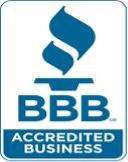Five tips to protect yourself from hacking
The team at TCR Solutions knows all the sneaky ways hackers work because we are regularly called in to remediate the damage caused by a hacker penetrating your backend system. We know how they find vulnerabilities, and how they sneak into your system. Fortunately the steps YOU choose to take are one of the biggest pieces of the equation, and we know how to guide you in prevention strategies. Here are 5 tips that we’ve learned from experience, are the best ways to keep your system safe, and avoiding the costly mistake of leaving your system vulnerable to a hacker.
Tip #1 – Be aware that you are a target
It can happen to anyone at any time. It’s easy to assume that it only happens to other people. A compromised credit card, an identity theft, a debilitating virus or malware. You need to remain aware that you are not above the risk, we are all at risk of hacking attempts. If you have a computer, and an internet connection, you are vulnerable unless you take steps to not be. It will continue to become a more realistic threat as technology continues to advance. The stakes are high – both for your personal information, as well as for your business assets. Remaining aware and taking steps to protect yourself and your company from the costly mistake of letting a hacker penetrate your system will save you lost time and a lot of frustration.
Tip #2 – Keep software up-to-date
Installing software updates for your operating system and programs is critical. Be sure to always stay on top of the latest security updates for your devices with these actions:
- Turn on Automatic Updates for your operating system.
- Use web browsers such as Chrome or Firefox that receive frequent, automatic security updates.
- Keep browser plug-ins updated (Flash, Java, etc.)
Tip #3 – Beware of suspicious emails, texts and phone calls
We’ve covered this one in depth in our blog ‘9 ways to avoid being spammed and spoofed’ but it can’t be emphasized enough. Phishing scams are a constant threat – using various tactics, cyber-criminals will attempt to trick you into sharing personal information through very compelling stories, asking for things such as your login ID and password, banking or credit card information.
- Phishing scams can be carried out by phone, text, or through social networking sites – but most commonly by email.
- Be suspicious of official-looking emails or phone call that asks for personal or financial information. Law states that a phishing scammer will go to jail for impersonation when they use the actual official logo of the company they’re trying to pose as. They are much more likely to fly under the radar of trademark infringement and impersonation laws by not using the logo. Check first to see if there is an official logo of the entity they are posing as, as well as an actual email address from the company’s URL.
Tip #4 – Be relentless about good password management
The average person has around 50 passwords and online accounts to manage. It’s easy to try and simplify your life by reusing the same password for all your accounts. But this is the quickest way to give a hacker the keys to ALL your accounts if they penetrate just one of your systems. We recommend finding a password manager that fits what you need, and can help you to maintain strong unique passwords for all of your accounts. A good password management tool will generate strong passwords for you, enter your credentials automatically, and remind you to update your passwords periodically. Here’s a list we like from PC Magazine’s for the top-rated password management tools, to keep all your online accounts secure, and alert you of potential data leaks. We have other suggestions too, for your business management tools. Reach out to our team for more options if you own/operate a business.
Tip #5 – Be careful what you click
Always avoid visiting unknown websites and especially downloading software from untrusted sources. These sites are notorious for hosting sneaky malware that automatically installs itself onto your hard drive, and will slowly get to work memorizing and extracting your data.
If something doesn’t look or feel right, take the safe road. Don’t click on attachments or links in the email if they seem suspicious for any reason.
There are downloads that we can recommend, as well as browser add-on features that prevent the automatic download of plug-in content (e.g., Java, Flash) and scripts that can harbor malicious code. We are familiar with all the options, and are here to help if you aren’t sure where to start. As always, we’re here to guide you, answer questions, and help you get setup for maximized security. Your success is ultimately our success!

